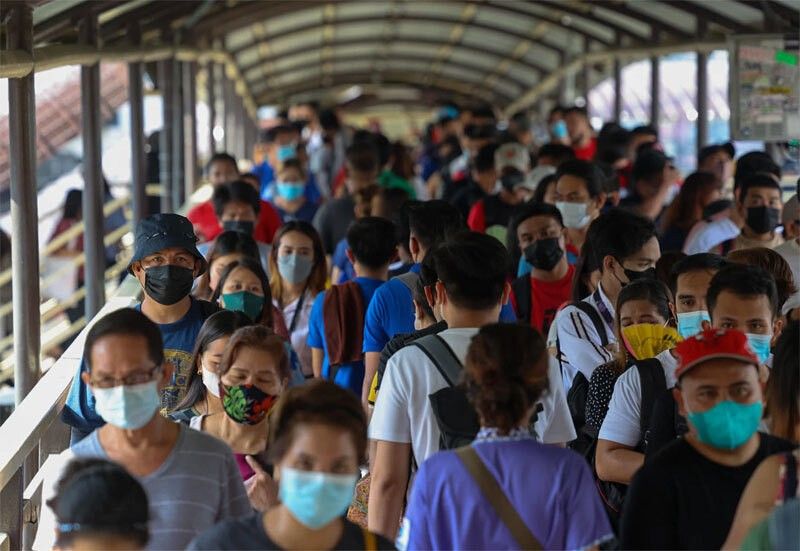Unemployment rate down in September, but job quality worsens as inflation stings

MANILA, Philippines — The jobless rate declined in September despite firms and businesses contending with piping hot inflation that suppressed the public’s purchasing power.
A survey of 10,959 families nationwide showed there were 2.5 million Filipinos who were either unemployed or out of business in September, lower than the 2.68 million jobless people in August, the Philippine Statistics Authority reported Tuesday.
The latest reading translates to a jobless rate of 5.0% in September, down from 5.3% rate in the preceding month.
That the unemployment rate retreated while the country grapples with red-hot inflation increases the urgency for the Marcos administration to tame stubbornly high consumer prices. Government data showed inflation surged in September as the domestic economy grappled with the effects of a devastating typhoon choking the supply chain.
As it is, the cost of living in the country has left Filipinos searching for additional work to boost their monthly income. The PSA reported that 7.33 million people were underemployed in September, higher than the 7.03 million recorded in August.
The figure translates to an underemployment rate of 15.4% in September, up from 14.7% in August.
Labor force shrinks
That said, National Statistician Claire Dennis Mapa said the September outturn weren’t surprising. Survey data showed 50.08 million Filipinos, translating to rate of 65.2%, were either employed or jobless in September. This was lower compared to the previous month, as Mapa noted some opted to return to schooling, most of whom were women.
“Schooling contributed to the drop in the labor force participation rate on a monthly basis since 500,000 indicated they went back to school. There’s a substantial number that return to schools,” he said.
Leonardo Lanzona, a labor economist from Ateneo De Manila University, pointed out why the steady decline in labor force should be cause for concern
“This can mean that the outlook for the economy has deteriorated, resulting in lower demand for workers and workers deciding not to look for jobs,” he said.
Lanzona noted this would explain why the jobless rate tempered in September, since underemployment climbed up, a result of more low-quality jobs circulating in the domestic economy.
Even then, underemployment felt the stinging pain of inflation in September. The reopened domestic economy supported the workforce’s significant uptake in recent months but also fanned inflationary pressures as Filipinos went out in droves to spend.
Inflation and scars
Domini Velasquez, chief economist for China Banking Corp., sounded the alarms on the underemployment figures.
“Underemployment rate?has been trending up for the fourth consecutive month already as high inflation possibly leaves income insufficient for employees' basic needs,” she said in a Viber message.
The PSA noted that on a monthly basis, five subsectors were largely responsible for sending Filipinos scurrying into unemployment. Wholesale and retail trade, repair of motor vehicles and motorcycles, administrative support, construction, agriculture and forestry, and arts and entertainment industry all cut jobs by at least 100,000 in September.
For Nicholas Antonio Mapa, senior economist at ING Bank in Manila, the underemployment figures show the labor market’s scars from pandemic fallout.
“We note that underemployment remains high while the participation rate fell slightly suggesting that underneath the surface the jobs market has yet to fully heal,” he said in a Viber message.
Zooming out, government data showed that on an annual basis economic subsectors that employed the highest numbers were manufacturing (1.09 million), wholesale and retail trade, repair of motor vehicles and motorcycles (852,000), agriculture and forestry (599,000), accommodation and food service activities (482,000), and transport and storage (470,000).
The PSA also noted that unemployment would hover at the 5%-mark for the rest of the year, but acknowledged the challenges that inflation posed on the labor market since this would impact demand. As it is, the PSA reckoned that the unemployment rate in September was the third lowest in their records since registering 4.5% back in October 2019.
Historical data showed that in 2019, the jobless rate eked out an average of 5.1%. By 2020, marking the onset of the pandemic, that number hit 10.4% before tapering to 7.8% in 2021.
The PSA noted that the labor force participation, employment, and unemployment rates returned to its 2019 levels. Even the National Economic and Development Authority pointed out that unemployment “remains largely at par with major Asian economies and is lower compared to that of India, Indonesia, and China.”
But for ING’s Mapa, tight monetary policy definitely impacted the latest jobs figures.
“Rising inflation and the general slowdown in economic activity due to rising interest rates could have stifled the gains in the jobs market,” he said.
- Latest
- Trending





























